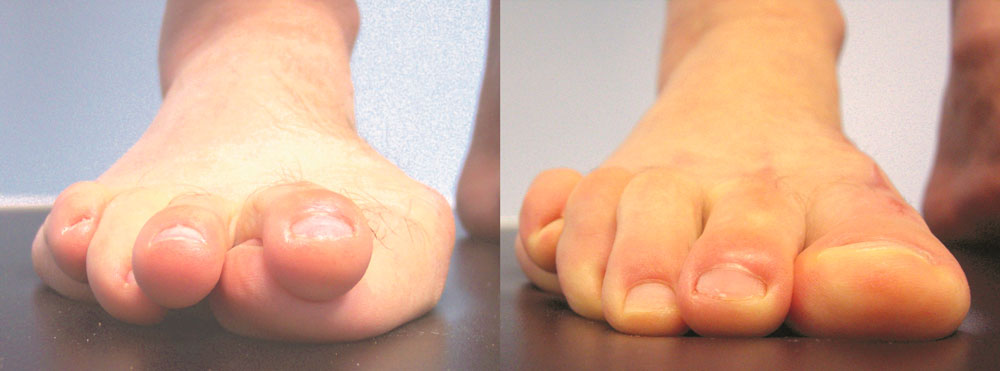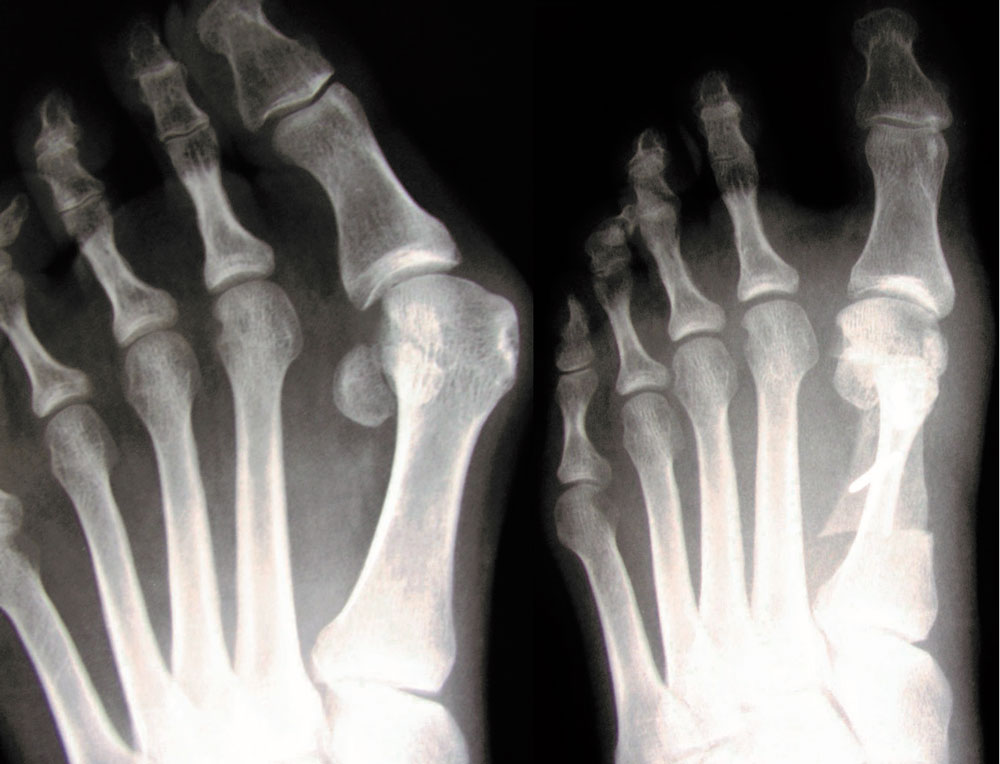Podiatry
In the area of podiatry, Asturpie is the department of the Clinic Asturian specialized exclusively in the diagnosis and treatment of problems and disorders of the foot.
We are the first reference of podiatry in Asturias, from the year 1981. In Asturpie took thirty years to dedicate ourselves to the care of your feet. We put at your disposal a team of professionals (doctors, podiatrists, nurses, ...) with wide experience in the different pathologies of the foot and offering customized treatments, applying the most advanced techniques.
The scientific and medical center allows our podiatrists to detect situations of risk in the groups as diabetic, arthritic, disturbances of the circulatory system. Performing a valuation and inspection of the foot, with a sensitivity assessment, an evaluation of the skin and quantification of the signs analytical (Doppler, ekg, x-ray, baro podométrico...).
Asturpie puts at the disposal of their patients with the following healthcare services:
- Quiropodologia: Care and treatment of corns, calluses, toenails, fungal (Fungi), papillomas.
- Podiatry Geriatric: Care and treatment of the feet, assessment of risk factors, tips and habits with the use of footwear.
- Podiatry Physical: Rehabilitation and treatment of sprains, processes tendon and care post-traumatic.
- Podiatry Child: Assessment of the feet from the 2 years. Alterations digital. Alteration and nail care. Alterations in biomechanical ( Start with the toe inward) and templates corrective feet Flat, foot Valgus.
Surgery of the foot

Where and how is the surgery performed?
Our surgery is performed with Local Anesthesia or Loco-Regional sometimes completed with sedation; that is, only we the area to intervene, allowing the patient to return to the address immediately after the intervention. It is what is donomina Outpatient Surgery
Does it require surgery of the foot always hospitalization? What type of anesthesia will be used?
Not necessarily. A large part of the surgery can be performed extrahospitalariamente, under local anesthesia, anestesiando only the area to intervene, so that the patient can return to his home after the intervention.
Do you require special care after the surgery?
With outpatient surgery, the patient can walk immediately. Our center performs a control weekly of the operated patients and follow-up protocols post. The patients require a shoe after surgery for about 15 days and then start with a type of footwear soft. Many times treatment physiotherapeutic or small templates help that the result is more satisfactory.
If it has been operated and the results are not satisfactory, you can return it to operate?
The people who have been bugged with inappropriate techniques, whose results in the medium-or short-term are not as expected and even exhibit more pain before being operated, it can operate again. We advise to perform a query to find the most appropriate solution.
What problems can we try?
- Nails are nailed
- Calluses on the ground or fingers
- A bunion, bunions tailor
- Neuromas
- Deformities in the fingers, a hammer, a claw
- Bursitis, Gangliones, Spurs
- Plantar fasciitis
- Flat feet
- Feet arches
- Reconstructive surgery of the forefoot

Templates
The section of Biomechanics and Ortopodológia of this center, is directed and conducted by the technical director of the laboratory of templates of the Clinic Benegas San Sebastian, PR.- Xabier Benegas. Person who has introduced 20 years ago in Spain, the system of templates or supports for plantar functional; established in the united States 40 years ago, with some contrasting results at the global level.
What is a template?
Templates or supports, plantar, are the elements that we put on the shoes to improve or compensate for a march painful or unbalanced. In CLINICAL ASTURIAN we distinguish two types of templates: Templates and functional Templates acomodativas.
Templates Functional (“Functional Foot Orthoses”)
Are templates that improve the function by synchronizing the movements of the lower limb, keeping the foot in its more correct position.
Templates functional are performed after a thorough exploration biomechanics of the lower limb and the computerised analysis of the march, which determines the neutral position or ideal of the foot of each patient.
Mold plaster
It is currently the most accurate way to capture the relationship forefoot-rearfoot of each patient for the correct development of the template. This negative mold of the foot, the laboratory obtained the positive with the, after the corresponding rectified, and according to the degree of correction valued in the exploration, we make the template functional. It can be made of different materials according to the use and the person being treated.
Types of templates functional
For footwear street
CLINICAL ASTUR is a pioneer in Spain in the use of composites laminates of carbon fiber for templates, material that allows a lot of control of the foot, without just taking up space in the shoe. From 1.2 mm thickness and different consistency (rigid, semi-rigid and flexible) are used in a normal shoe, and even shoes female high-heeled. It is also possible to use other materials such as polypropylene or the subortolen; material-thermoplastic with good qualities biomechanical.
For sports shoes
For athletes, we use thermoplastic or foam consistency gooseneck with absorption properties that are adapted to the practice of sports. Through the combination of different materials and after the mechanical analysis of each sport, in CLINICAL ASTURIAN we customize the templates, differentiating according to whether the sport that requires more cushioning, such as football, basketball or handball, or others who need more control as the golf, skiing or cycling.
What we are dealing with templates functional?
Pains of the foot and plantar fasciitis, metatarsalgias, overloads... as well as pain in ankle, knee and back, which can significantly improve with an adequate functional control of the supports. On A sporting level, the control of the supports not only improves injuries in tendons and overload, but also prevents and decreases the rate of injuries in all types of sports.
Templates acomodativas
They are soft templates that are tailored to the arches of the foot to reduce pressure and prevent overloads and ulcerations. They are especially indicated in the so-called “foot at risk” to patients, diabetics, and people with low-fat plant as arthritic and elderly people
Psychology

Otolaryngology
Dr. Javier Álvarez Álvarez
Consultation to individuals and associated entities:
IMQ / DKW / ASISA / SANITAS / SANTA LUCIA
Activities:
- Endoscopy
- Dizziness
- Audiology
- Otolaryngology child
